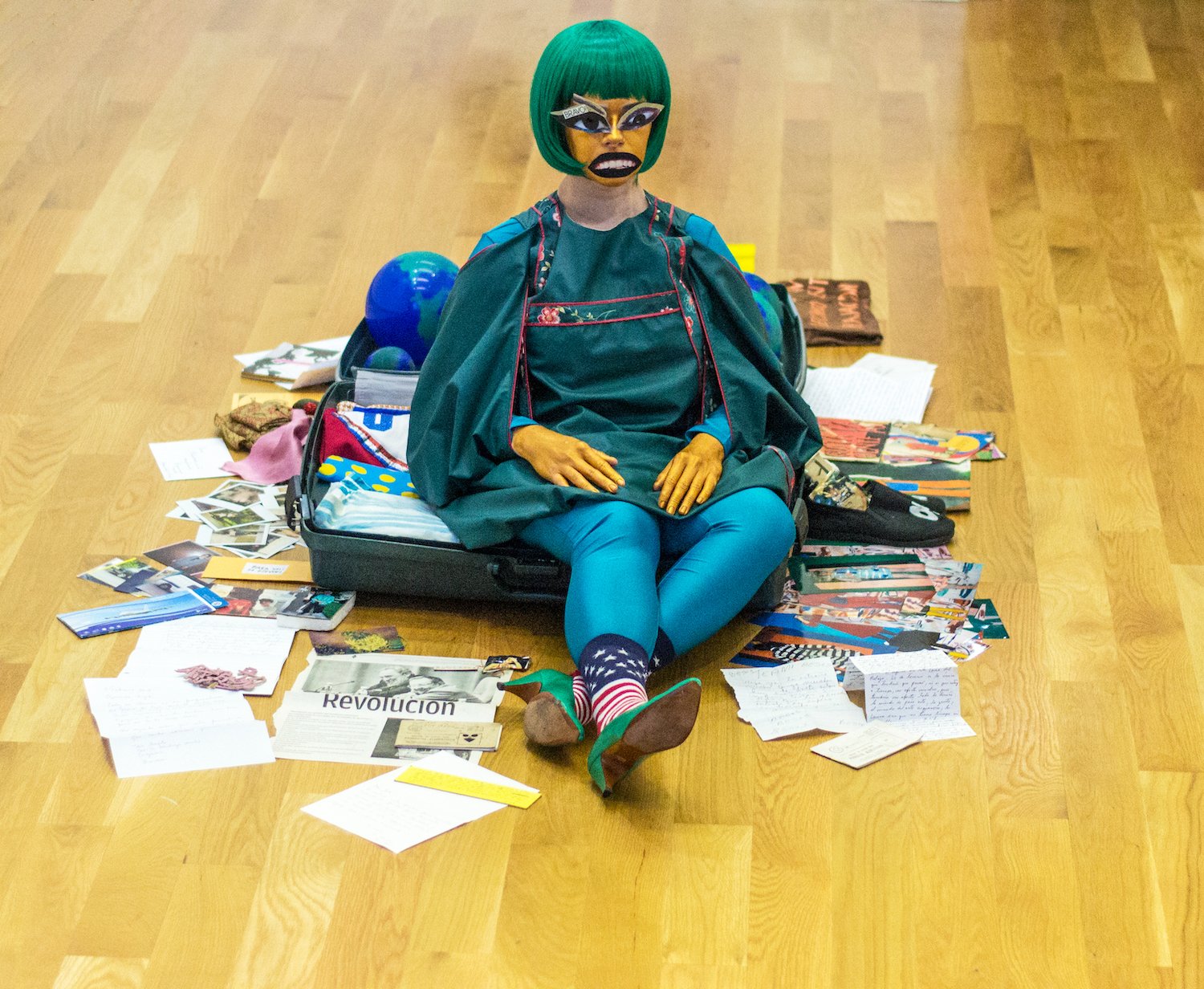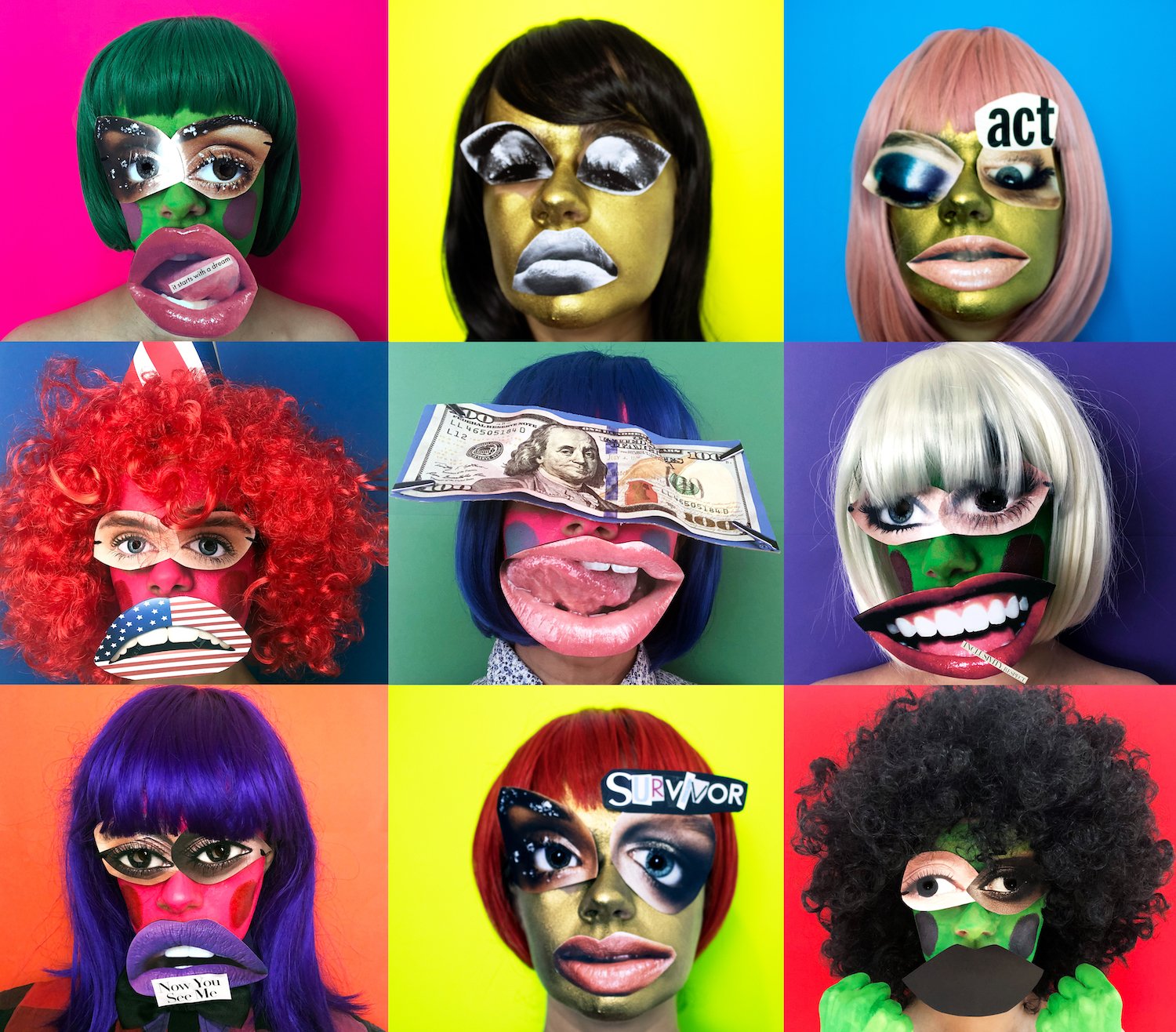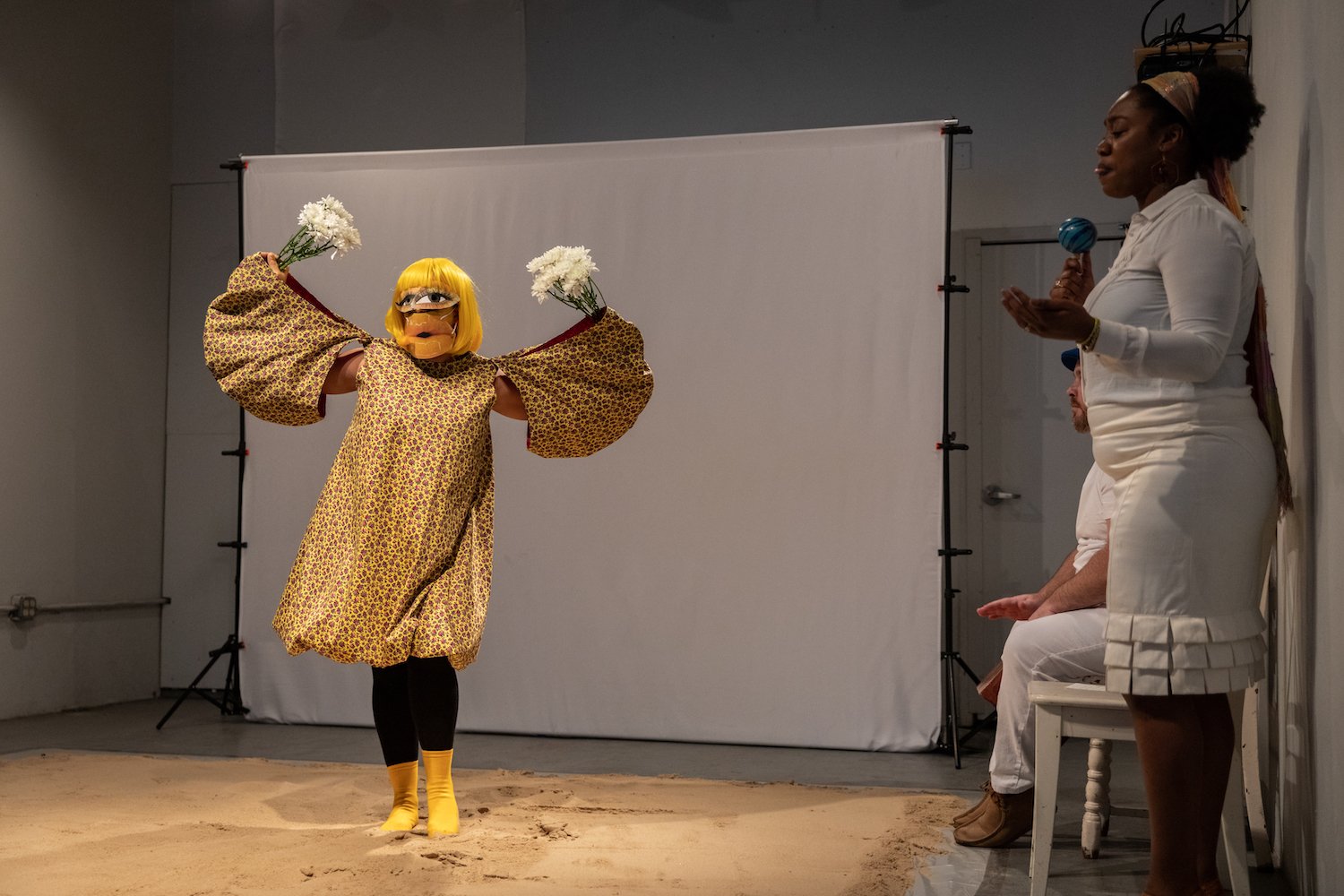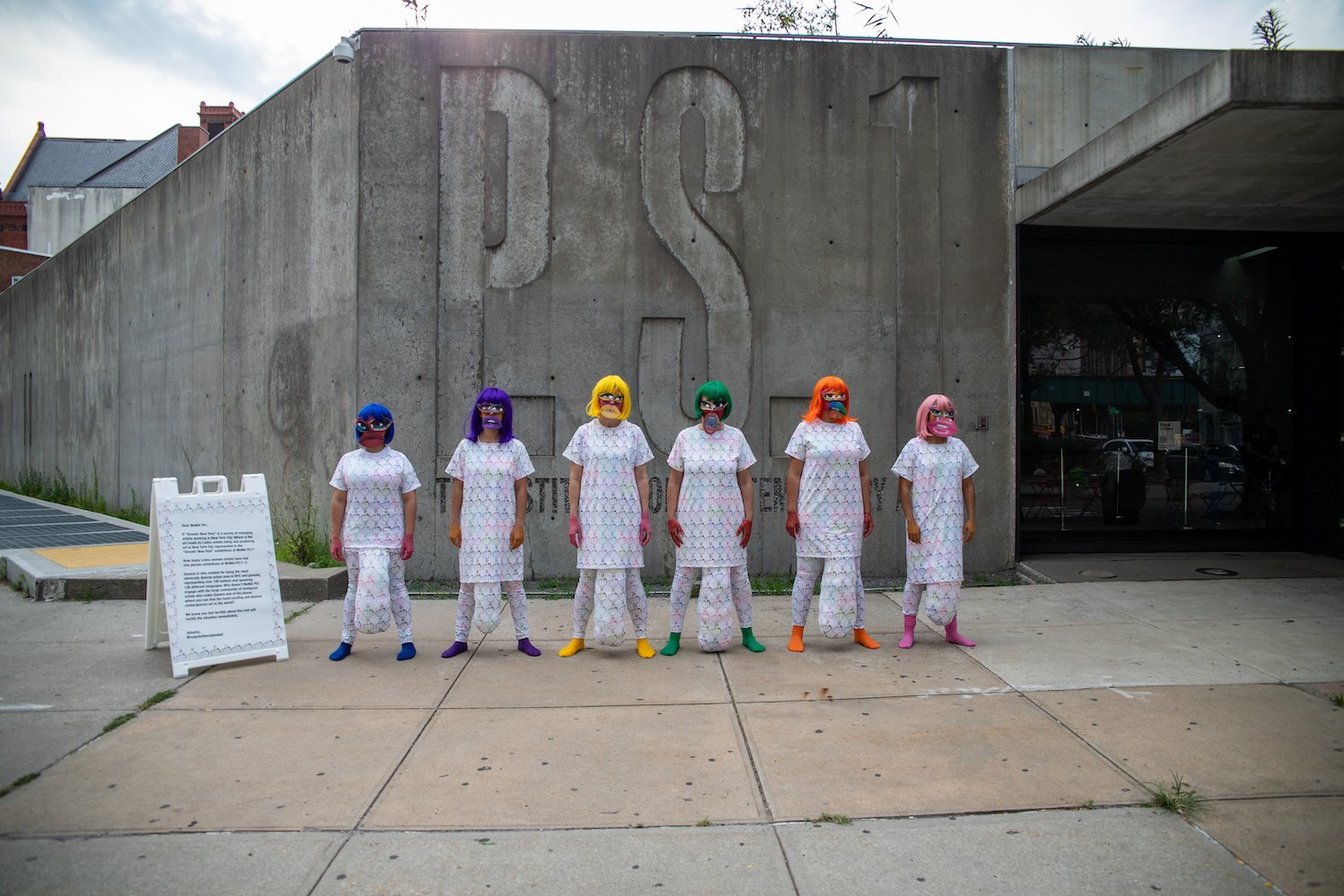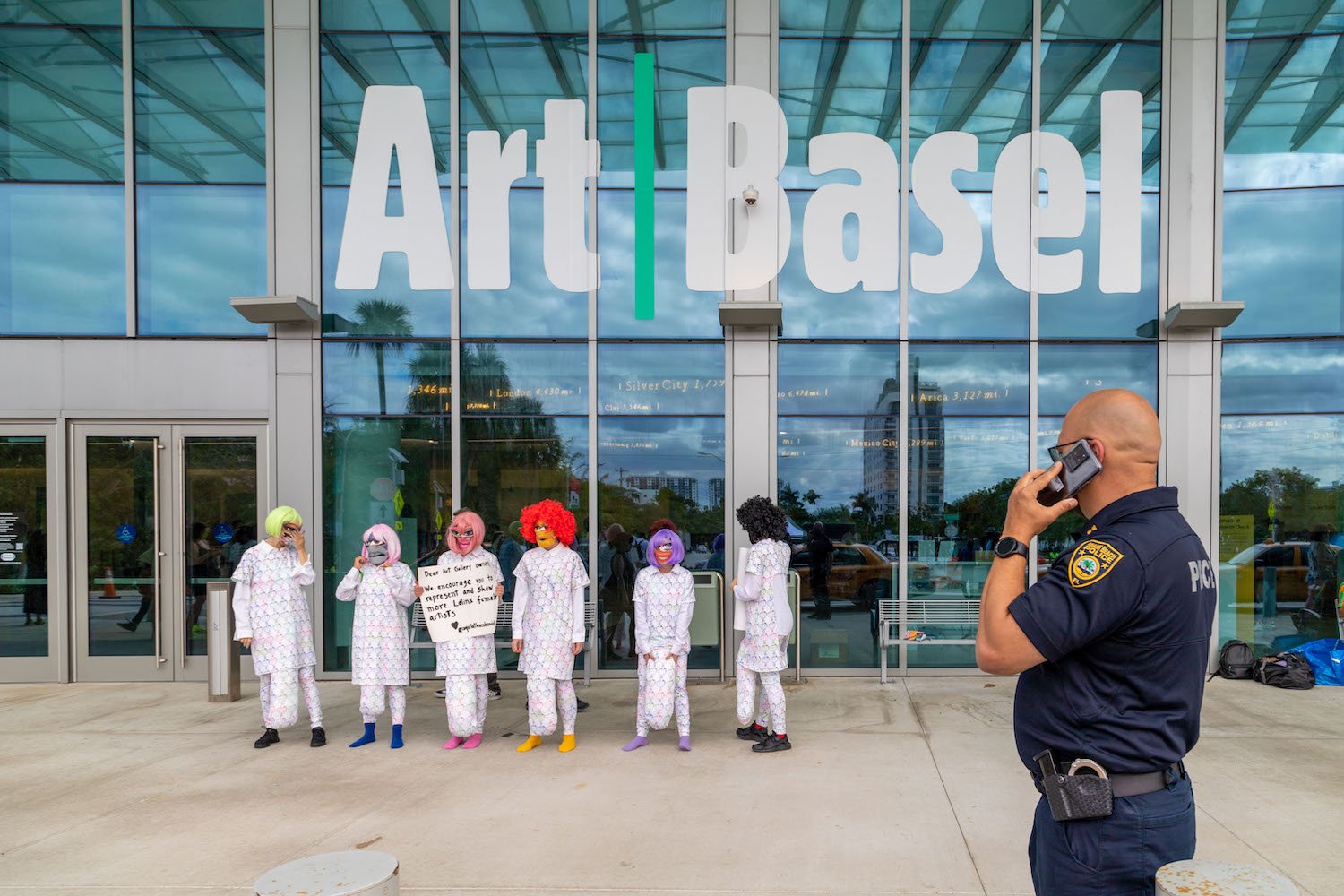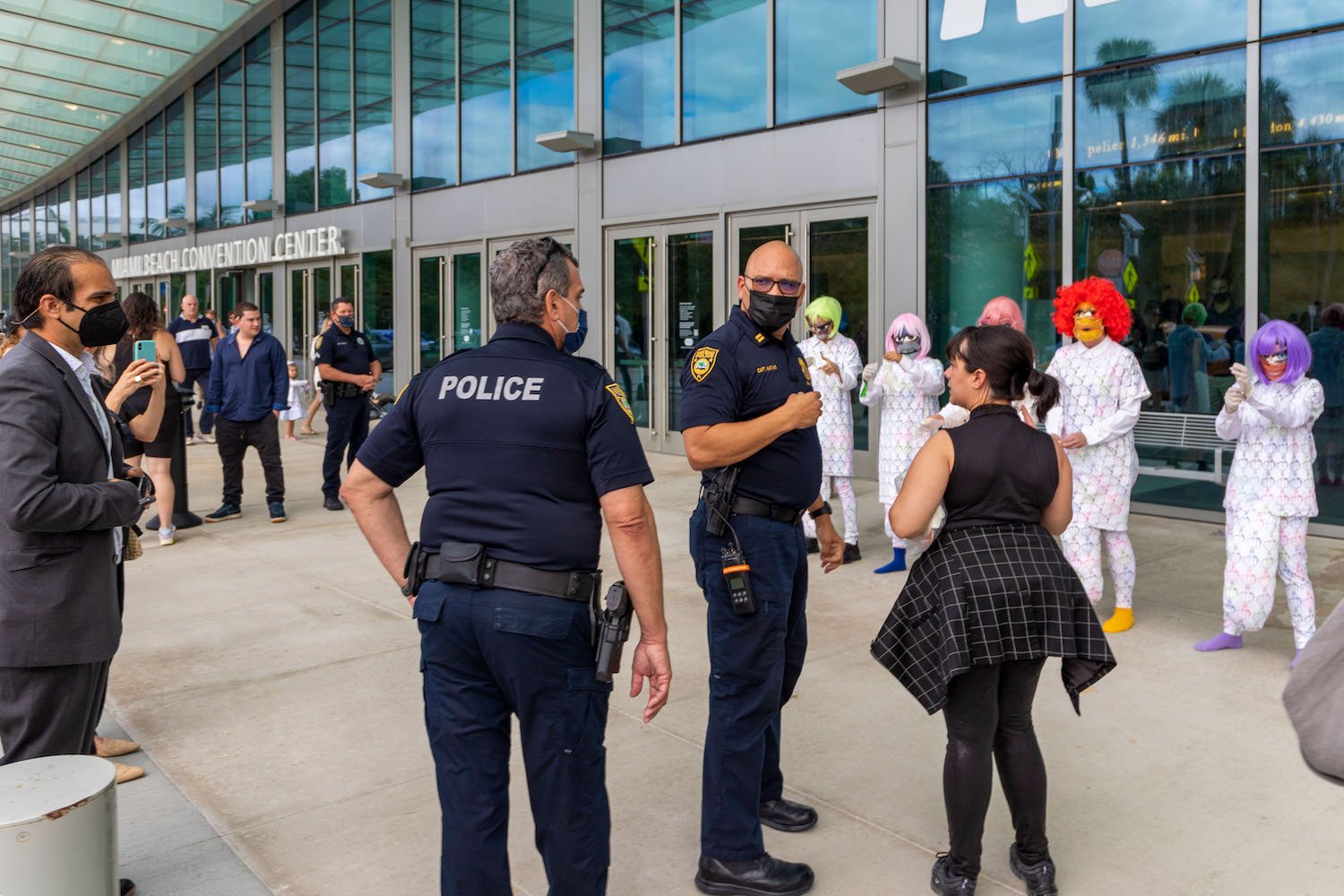Yali Romagoza
Nicolás Dumit Estévez Raful Espejo Ovalles: Yali, our connection happened through Arantxa Araujo, after a performance they and I presented at a community garden in Brooklyn. We have friends and colleagues in common both in Cuba and the U.S. Your arrival in the U.S. is relatively recent. You entered the country in 2011, so you have seen the latest developments of the Cuban regime. Why did you leave home, if you do not mind talking about it?
Yali Romagoza: In my world; my body is my home is the title of a performance I created in 2012, but it could be my life's motto. I always felt strange and marginalized in the country where I was born. Unable to express my authentic self-due to the idea of an egalitarian society that suppresses any expression of individuality and self-empowerment. Why did I leave Cuba? Well, instead, it's an escape and not abandonment. As a child, I lived through The Special Period, an economic depression in Cuba that unfolded during the 1990s which led to the escape of hundreds of Cubans to the U.S., where thousands died at sea. The so-called –"rafters– It was part of our daily life to see mothers and grandmothers desperate because their relatives were missing or imprisoned. I remember spending 10 to 12 hours a day without electricity, except for Fidel Castro's speeches, which were transmitted intermittently. The growing social inequality due to the decriminalization of the dollar, invasion of tourists, and rise of foreign companies made my generation aware that the Revolution failed. The Cuban government's abuse of power, oppression, corruption, and violence was only left. Leaving was not a choice; it was survival. When non-Cuban people tell me that the Cuban government is inspiring, I recommend that they go and live there; but leave their credit cards, cash, and passports. The only ones with the right to speak about Cuba are Cubans who have experienced a generational trauma that no one else can understand. And we have the right to express our pain.
NDEREO: Alanna Lockward said something like “Dominican art is diasporic by nature.” She was a radical in the true sense and her phrase resonates with me. I dare to expand Alanna’s phrase to include Cubans and Puerto Ricans, among other Caribeñes. Caribbean art is diasporic by nature. How does that relate to your work-life?
YR: I'm glad you mentioned the word "diaspora." It is so relevant to my artistic practice, and it's one of my missions to give a voice to the Cuban diaspora through my work. The politics surrounding everything related to Cuba does not include the Cuban diaspora within the Caribbean diaspora in the US. The voices of the Cuban diaspora have been erased and made invisible within the Western art system. The art system, including the market, museums, academia, non-profit institutions, etc., offers platforms, in general, to Cuban artists who produce within the island, turning their backs on an entire history of Cuban art in the diaspora for decades and creating a fissure between the two. The Cuban art of the diaspora is also Cuban art, and it is also American art. My artistic work of autobiographical nature centers on the experience of being a woman, Caribbean Latina, an immigrant in the U.S., and highlights the struggles of living between cultures. But I feel I have had to fight harder for the right to express my diasporic condition as a Cuban in the context of U.S. art, which is full of stereotypes, assumptions, and prejudices. The diversity of identities within the Caribbean diaspora is a concept that the art world is hesitant to accept and understand, resulting in exclusion and a false portrait of what American art is.
NDEREO: I recently got into an almost heated argument about the mythologies and deceptions involved in the Cuban revolution. I am referring to the view that some U.S. Americans hold of what might have been a liberating movement, and which might have turned into a regime that censors the free flow of ideas, bodies, thoughts, and ways of beings not aligned with those at the top. How can one engage creativity under these circumstances?
YR: Meditating my way out of Capitalism and Communism. Twelve thousand four hundred ten days of Isolation is an excellent example to approach this issue. In the performance, my alter ego Cuquita, the Cuban Doll, meditates for 30 minutes in the form of a public action near each subway stop along 14th Street as part of the Art in Odd Places performance festival in 2018. Twelve thousand four hundred ten days refer to my age through which I reflect on my past and present and recognize how the systems in power–Capitalism and Communism–oppress and marginalize the individual similarly. This piece has significantly resonated with the audience and subsequent writings about my work because it fell into this dilemma of good Cuban Socialism and evil American Capitalism. Whenever I think of the Cuban government, I think of the abusive husband who beats his wife, and when the wife goes to denounce him, no one believes her because her husband's reputation precedes him. Through my alter-ego, I propose to transcend this dichotomy and make visible the pain and trauma of Cubans for decades and our need to be heard, believed, and supported.
On the sign accompanying Cuquita, the Cuban Doll, in her meditations along 14th Street in each subway station, she says: Hello, my name is Cuquita the Cuban Doll. I was born in La Habana, and now I live in NY. I identify as a woman. I find myself surrounded by thorns. Also, I bleed every month. I will meditate my way out of Capitalism and Communism for 30 mins. Join me if you want. Please do not touch me.
Through the piece, I seek to establish a direct dialogue with people from my personal experience, where they can begin to demolish myths about the experience of Cubans in Cuba and also in the United States.
NDEREO: So much of the Other America, Latin America, has been in perpetual crisis caused by colonial forces and by empire. La crisis. My eyes watered the other day as I thought as to how many, or the great majority of the people in our nations are always in crisis. The wealthy nations have been sucking our resources for so long. Cuba was a dream for a different Latin America. How do you allow creativity to flow from this perspective of crisis and constant struggle?
YR: I am staying alive, which is hard enough. No one can deny my truth or take away what I have lived and learned. Making art is a great way to communicate. In my art are all the answers.
NDEREO: So much of the glamour of being a Cuban artist has been fetishized by U.S. curators and arts organizations as being connected to being a Cuban artist in Cuba. This is a generalization, since I have friends in the island who could benefit from been fetishized, and their work is great, and still underrecognized. What does your practice entail as a Cuban artist outside the island?
YR: In the book Latinx Art by Arlene Dávila that I read recently, there is a section called “Behind the fetish of Cuban art” under the chapter “Nationalism and the Current Status of the Categories.” For those who have not read the book, Dávila explores the problem of visualizing Latinx art and artists within the global contemporary art market, showing the importance of race, class, and nationalism in shaping contemporary art markets.
Nationalism is something I have thought about a lot in the importance of drawing attention to an artist's work. In the diaspora, we lose our privilege of nationality, which in the case of Cuban artists, dramatically affects our careers. There is interest from curators, museums, gallery owners, collectors, and art institutions in Cuban artists producing art in Cuba; many artists I know claim that they are based in Cuba when they reside in another country or create projects that keep them going back and forth from the island. Within the art system, nobody seems too excited by Cuban artists living and producing work abroad. For example, I have lived in Queens, NY, for 11 years. The Queens Museum has never invited me to participate in its exhibitions nor accepted my applications in its open calls. I have visited exhibitions in this museum where Cuban artist friends have participated and have been cataloged as residents of Cuba and/or Cuban as the only nationality. If I didn't experience it myself, I wouldn't believe it, and this is to mention an example; there are many more.
Juana Valdes, an artist of Cuban origin based in the U.S., talks to Arlene Dávila in Dávila’s book: They want to buy that story; they don't want to buy the American story... what makes Cuban art marketable is the exoticness of collectors being able to say they were at artist's studios and had this amazing experience in Cuba ... if you're in Cuba, you're it. If you're in Miami, then you are one of the many. I bring this up because it explains so clearly how this help to reinforce nationalist boundaries and makes it very hard for Cuban artists who don't fulfill this expectation to be exposed to the same opportunities. However, I’m hopeful. Some artists, myself included, are pushing for a more inclusive and diverse contemporary art world.
NDEREO: Can we talk about dolls? Who are they. How did they come to be?
YR: Cuban cuquitas were cut-out paper dolls that used to appear on the back covers of magazines dedicated to women in Cuba in the 1970s and ‘80s; these figures were accompanied by costumes and accessories and cut-outs with which the cuquitas could be “dressed.” Many generations of Cubans grew up playing and imagining women through cuquitas and their designs. I was no exception. Between the heat of Cuba and the blackouts during my childhood, I played with the Cuquitas, escaping to an imaginary world. This reference inspired my alter-ego Cuquita The Cuban Doll. Cuquita The Cuban Doll as an alter-ego comes off the paper, migrates to a three-dimensional world, and exists in an English-speaking context. She suffers from my uprooting and the lack of representativeness and assimilation in the U.S. society. Her character is provocative and defiant in the face of the stereotypes with which she is judged. She exists in the freedom that I do not have either as a person or as an artist.
NDEREO: What are some of the pressing issues your Cuquitas bring to the forefront?
YR: As a result of my experience in the U.S. coming from Cuba in 2011, I created my alter-ego Cuquita the Cuban Doll, to rebuild a cultural home within the U.S. art scene, where I often do not feel included or represented. As a former fashion designer, I carefully craft each costume that Cuquita the Cuban Doll wears to connect with her body in an inherently behavioral way that transforms her body and the spaces she occupies. Through her narration, she illustrates what it is like to inhabit a space between cultures to address feminism and marginalization while poking fun at the misogynistic and racist stereotypes that particularly plague Latinas in the U.S.
NDEREO: I see connections between your work and that of Elia Alba and the one that the Guerilla Girls do. Elia, because of her masks and dolls, and the Guerilla Girls because of the masks and also their ongoing critique of the status quo prevalent in arts institutions and beyond. I feel that, with all of its shortcomings and cooptation, there is not much institutional critique being done by artists now. Any thoughts as to how your work still questions the conscience of the institution?
YR: I studied Art History at the University of Havana in Cuba. I mention this because my first approach to art was through a close look at history. At the time, the absence of female artist figures in periods of art history or the existence of significantly few female artists compared to men seemed very suspicious. Criticism of the art institution by artists is essential to highlight injustices and fight for a more equitable art world. Art history has been written primarily by privileged western white men who selected their kind, excluding female voices throughout history. In that manner, they created the foundation for what we understand today as the art system. Through my work, I critique the art institution a bit further, asking questions about the exclusion and erasure of the Latina artist in the diaspora–within contemporary feminism, how diasporic female voices are validated and supported.
NDEREO: You talk about your struggles as a Latina artist? What are they?
YR: The lack of representation and inclusion. The lack of opportunities and support. The misunderstanding of the diverse Latina identities, histories, languages, countries of origin, and stories. The stereotypes, prejudices, racism, and misogyny. The lack of acceptance of diverging conceptual narratives. I have been the only Latina in my MFA program, in art shows, residencies, etc. There are a few spots for us in each opportunity, and they put us to compete against each other. They call us "minority" (ugh, I dislike that word) when 62.1 million Hispanics live in the United States. The nation's second-largest racial or ethnic group after non-Hispanic whites. According to these statistics, there are so many of us; how is it that very few of us make it into the mainstream of the art world? The Latinas also have to deal with the machismo that comes from a vicious circle of learning how to oppress, harass and kill women by Latin men. Our partner is also our enemy.
NDEREO: I admire how many artists in Cuba have managed to keep creativity alive and to even risk their lives to express ideas. How easy would you say it is to express ideas in the U.S. context? I am asking because you have experienced the communist and the corporate sides of being an artist.
YR: No me pongan el lo Oscuro (Do not bury me in Darkness) is a project in public spaces, particularly outside art museums and art fairs. Museums security has always been vigilant about the development of the performances, but at least in NY, it has never intervened or stopped the actions. Another story was in Florida. The police aggressively approached the public space outside Miami Beach Art Basel, where we performed. They wanted us to leave. I had to negotiate with them, but we finally did it. Cuquita, The Cuban Doll, has never been in the public space of Cuba. And I don't wish that for her because I, Yali Romagoza, was arrested and sent to a police station when I was 20 years old, and the officers didn't allow me to speak. They just took me.
NDEREO: I have no more questions for now, so I open the space for you to say anything that calls to be said.
YR: ¡Muchas Gracias! Thank you for sharing your platform with me and allowing me to express my ideas. I am deeply grateful for your kindness and hope that we continue to have the opportunity to discuss these critical issues and always be very honest.
Yali Romagoza is a Cuban-born multidisciplinary artist currently based in Queens, NY. She graduated with an MFA in Fashion from the School of the Art Institute of Chicago and a BA in Art History from the University of Havana. Her works have been included in the Art and Social Activism Festival, and The Immigrant Artist Biennial. Romagoza has performed at Links Hall Theater, White Box, Teatro LATEA, Art in Odd Places, Southeastern Center for Contemporary Art, Grace Exhibition Space, NY Latin American Art Triennial, Satellite Art Show, and Abrons Art Center, NY. She has been granted awards and residencies, including Cátedra Arte de Conducta by Tania Bruguera, NYFA Immigrant Artist Mentoring Program, Creative Capital NYC Taller, Franklin Furnace, SVA Art Residency Project, EMERGENYC, Queens Art Fund.
All images courtesy of Yali Romagoza
